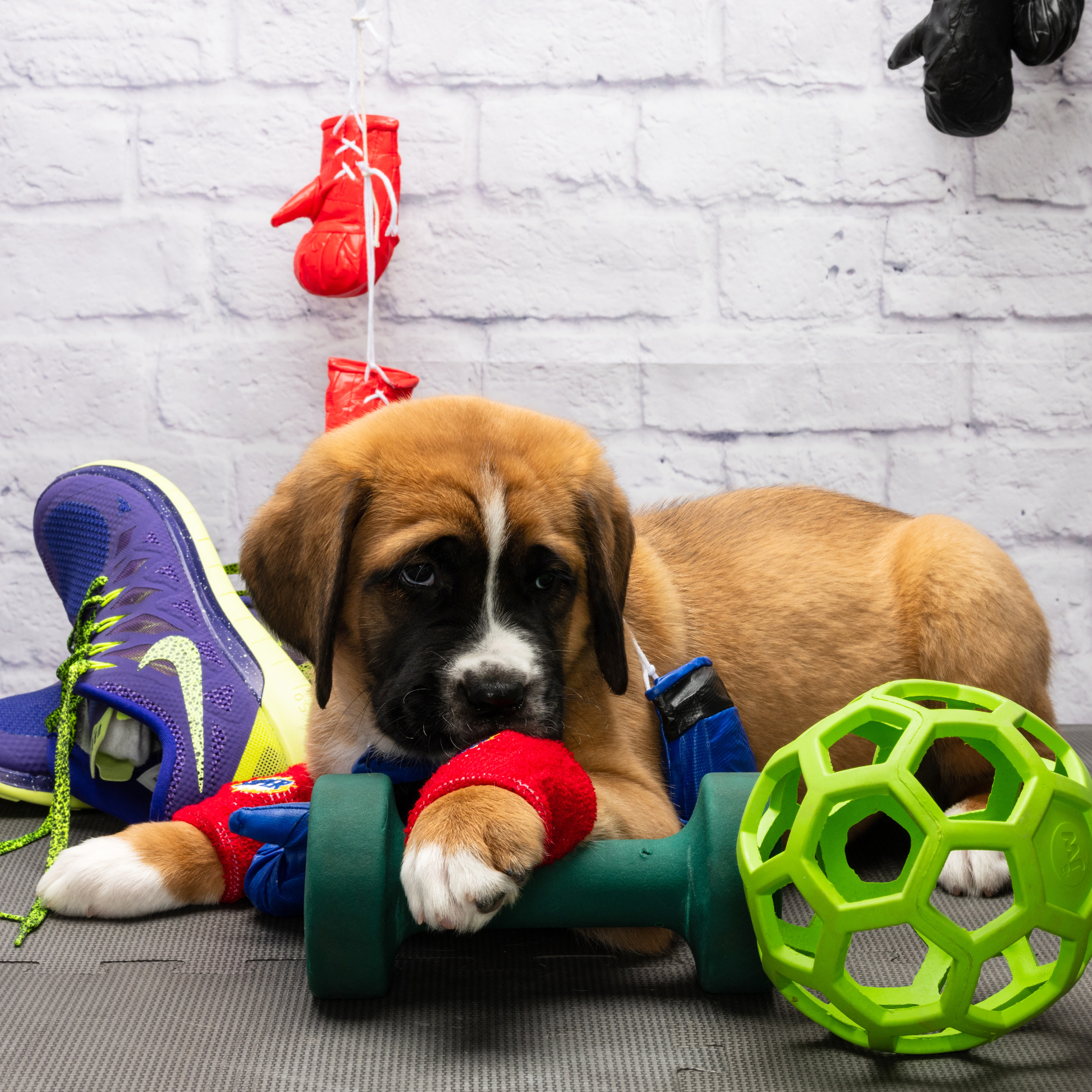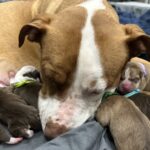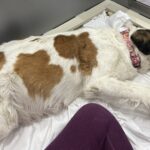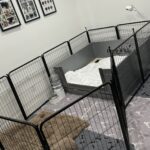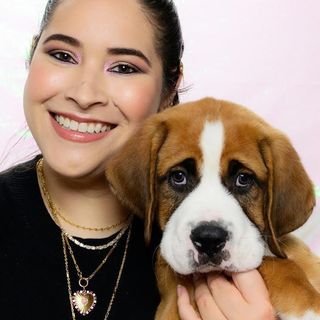Sometime between as early as week 5 and as late as week 8, puppies may start to show signs that they’ve entered into their first fear period (which can last 2-3 weeks).
They may show these reactions towards things they’ve previously been fearless of. If you notice this, you may need to reduce the intensity of experiences and objects. The key is to continue keeping experiences as positive as possible and give them a safe space to experience fear and overcome it.
If your pup has not yet entered into the fear period, you can continue to ramp up the intensity of objects and experiences.
Weeks 6-7 Overview
- Continue desensitization to grooming activities (bathing, brushing, nail trimming, etc.)
- Introduce crate training by enclosing pups in crate
- Introduce formal potty training by taking pups to potty area when they wake up and after eating
- Begin transition from wet food to kibble
- Continue building bond and trust with pups through handling, cuddling, petting and meeting different people
- Continue to rotate through toys, textures, and objects in environment
- Increase the difficulty or size of obstacles
- Continue car rides, add in cart/wagon rides
Care Tasks
| Task | Recommendation | Frequency |
|---|---|---|
Basic Care | Bathe (every other week), trim nails (weekly), brush (as needed), weigh (weekly) | Weekly to Bi-Weekly |
Potty Training | Start proactively taking puppy to potty turf, potty pad, or outdoor space after waking or eating (See Potty Training Guide) | As needed |
Crate Training | Crate puppies together after playing for 15 minutes (closed), increase duration gradually (See Crate Training Guide) | At least once daily |
Play time in outdoor space | Allow pups at least 60 minutes of play outdoors (weather permitting) | At least once daily |
Transition to kibble | Feed pups 3x daily, always offer water (See Introducing Food and Water) Increase kibble, reduce wet food | 3x Daily (Food)As needed (Water) |
Socialization Tasks
| Task | Recommendation | Frequency |
|---|---|---|
| Body handling | Freely interact with pups by holding, petting, and cuddling; touch their paws, ears, and tail | Daily |
| More new people | Pups can meet more people for longer periods and more often, try having people wear hats, sunglasses, etc. | Weekly (or more, if foster can do so) |
Environmental Enrichment
From this point forward, you can add novel items if you can think of them or have them available to you, but it is okay to rotate through existing items at this point!
| Task | Recommendation | Frequency |
|---|---|---|
Rotate toys and textures | Rotate toys and textures each time you clean the pen | 2-3x Weekly |
Continue using difficult obstacles | Rotate through obstacles but increase difficulty by adding more slippery or uneven surfaces, like balance/wobble boards, rolling objects, stairs | 2-3x Weekly |
Passive sounds | Ensure pups can hear household activities, especially louder ones like vacuuming | Daily |
Age-Appropriate Toys, Textures, and Obstacles
Toys need to be of the appropriate size to avoid pups swallowing or choking on them. You may also find some pups are more apt to destroy certain types of toys, which should then be removed and avoided.
Textures need to complement the pups’ mobility level. If pups are walking competently, smoother, slippery, or uneven surfaces should be added to the texture rotation.
Obstacles must complement the pups’ capabilities and their size. A tiered spice rack might make great stairs for smaller breeds while a toddler’s step stool may work for larger breeds.
Interactive Enrichment
Continue to increase the duration and/or intensity of prior weeks’ tasks. Continue to encourage and reward puppy politeness!
| Task | Recommendation | Frequency |
|---|---|---|
Continue playing with toys, ★ introduce puzzle toys | Play with pups using the toys in their pen, encouraging them to approach and interact with the toy you’re holding Introduce puzzle feeders along with lick mats (stop if resource guarding appears) | Daily |
Redirect mouthiness | Allow only gentle mouthiness (“yelp” like a littermate would if too firm) and redirect mouthiness to toy | Daily |
Reward good behavior | If a pup chooses to sit, stop whining, etc, reward with affection | Daily |
Sit with pups, call them to you, walk with pups | Interact with pups, allowing them to explore you, climb on your lap, maneuver around you Encourage them to walk towards you, with you, and follow you around | Daily |
Loud, unpredictable sounds | Bangs, booms, clangs, thuds, whirs, yells – louder, less predictable sounds; like action movies, cartoons, video games, different types of music, etc. | 2-3x Weekly |
★ Car rides and cart rides | Continue taking pups on short car rides in an enclosed crate. You can take them on neighborhood walks in a cart/wagon (that is safe for them) | Weekly |

